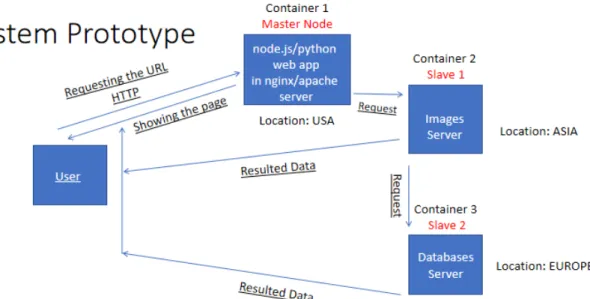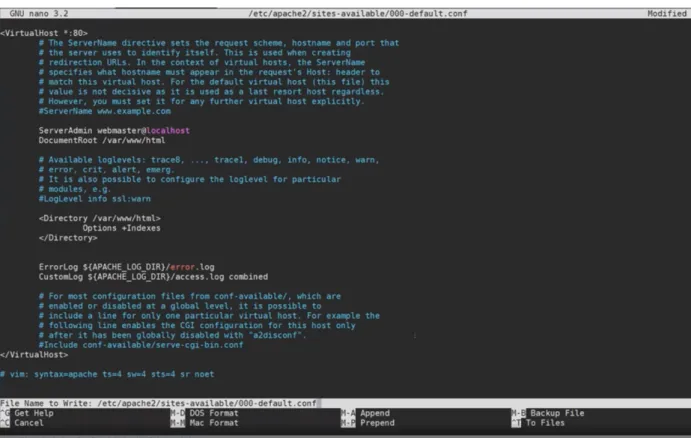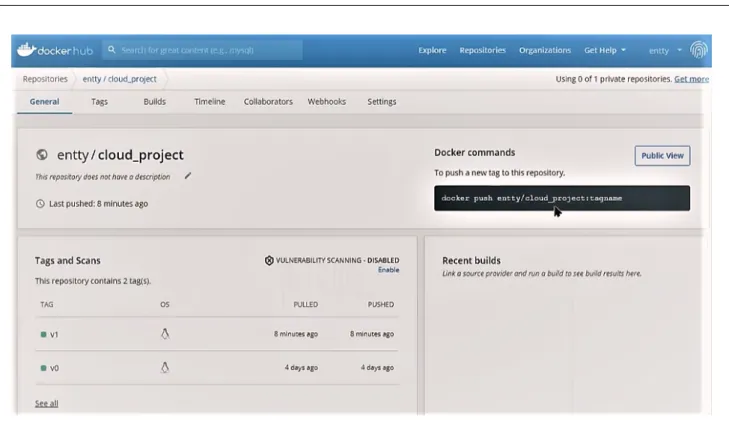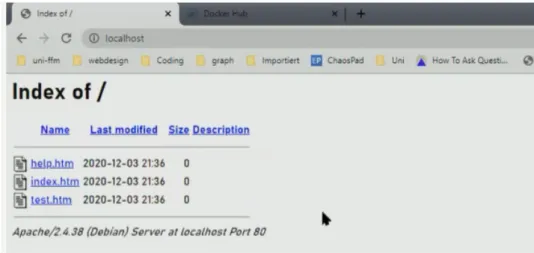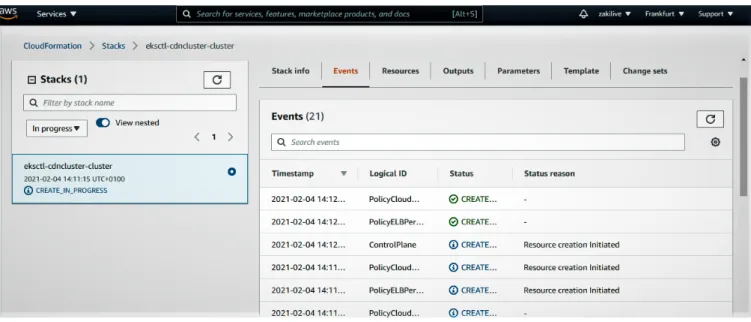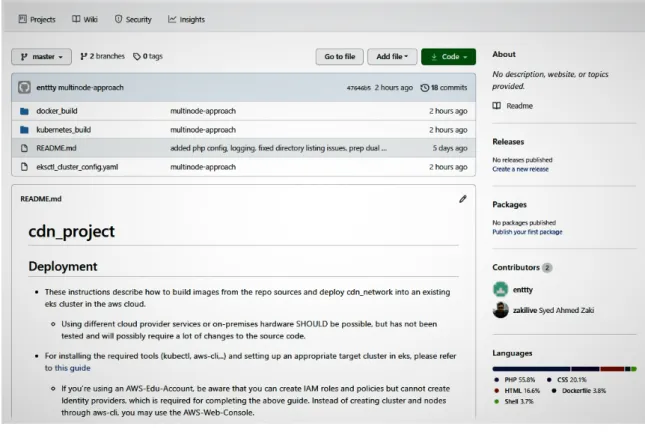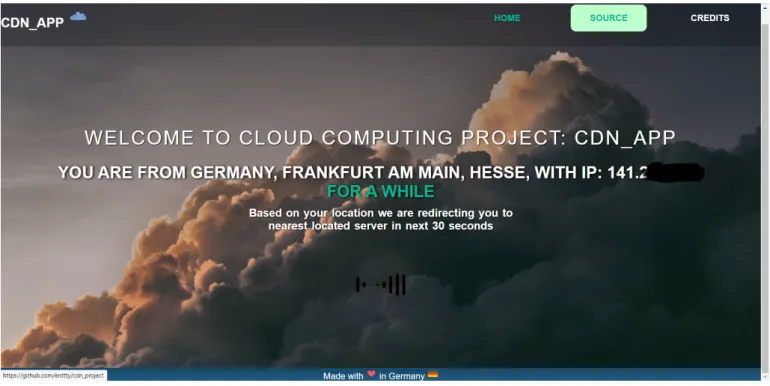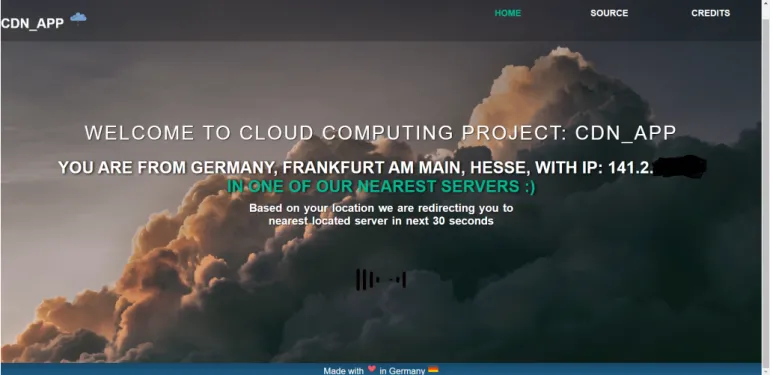Nibelungenplatz 1 60318 Frankfurt am Main
A REPORT ON
"Kubernetes and Docker based
Content Delivery Network Application (CDN_App)"
for
Cloud Computing (WS2021) Project of
M.Sc. in High Integrity Systems
SUBMITTED BY
Syed Ahmed Zaki (ID: 1322363) syed.zaki@stud.fra-uas.de
Daniel von Barany(ID: 1323045) daniel.vonbarany@stud.fra-uas.de
UNDER THE GUIDANCE OF Prof. Dr. Christian Baun
Contents
1 INTRODUCTION 1
1.1 Technologies . . . . 1
1.2 Motivation . . . . 1
2 PROBLEM DESCRIPTION 2 2.1 Problem Statement . . . . 2
2.2 Explanation . . . . 2
2.3 Why we need it . . . . 3
2.4 When not to use it . . . . 3
2.5 Real life problems case study . . . . 3
2.6 Popular CDN networks . . . . 3
3 IMPLEMENTATION OF PROJECT 4 3.1 Software and Hardware Requirement . . . . 4
3.2 Description of Implementation . . . . 4
3.2.1 Building the container: . . . . 4
3.2.2 After building the container . . . . 5
3.3 Deploying on AWS . . . . 8
3.3.1 Why AWS? . . . . 8
3.3.2 Docker . . . . 8
3.3.3 Kubernetes . . . . 10
3.4 Loadbalancers . . . . 11
3.5 Teamwork on Github . . . . 12
3.5.1 Some troubles we had faced while doing this project . . . . 13
4 FINALIZATION OF PROJECT 14 4.1 Screen shots of project . . . . 14
4.2 Modules description . . . . 15
4.3 Some issues . . . . 15
4.4 Our current project structure . . . . 16
5 Future Goals 18
6 CONCLUSION 19
References 20
INTRODUCTION
1.1 Technologies
Docker is the most widely used container virtualization system [1] and provides several very useful tools for development, maintenance and deployment of cloud software applications. There are two types of resources in docker: containers and images. Images are modified versions of software distributions that can be run through the docker virtualization engine in a platform-independent way, without the overhead of running a full operating system instance on VM or bare hardware in a (virtual) cluster. This efficient approach allows a regular developer machine to run multiple software containers at once and act as a single- or multi-node virtual cluster. It also makes things easier to reuse in any place for its versioning of images and availability on the docker hub. Kubernetes helps us to scale the system when we deploy something using it for its containerization and orchestration system. Our project report has described one of the applications using docker and Kubernetes implementation on the AWS platform.
1.2 Motivation
We wanted to build a system that can make an easy way for users for delivering content in the shortest possible time based on location. To build a system that can point to nearby servers and can give the best performance to the requested user. There are always some issues with downloading speed and uploading speed alongside the bandwidth limit. It also causes delays to stream something. To find out the solution for this situation pointing out to nearby servers is much more needed. So this system has some real-life motivation. Also for gaming servers and other related places it is also needful to connect nearby places for best performance. Relative to network limits and other connectivity issues a Content Delivery Network (CDN) can solve these criteria easily. Especially when it is on virtual machines and running its instances.
So it motivated us to build something for this situation.
To be mentioned, learning about docker and Kubernetes was our priority for completing the project and later we decided to make something that has real-life implementation and can work on different perspectives and can make values.
To energize the project we have studied several cases online and wanted to learn about content delivery systems from there. We have seen it has various uses and different ways to build it. Which also gave us enough motivation to build something like that. We worked hard and built enough strength to make it successful. However, on the journey, we had faced several errors while deploying and creating clusters online and team issues which made us a little disturbed to complete project but in the end, we tried to build something really useful. In the later part of this report, it has been described how all things have been built, implemented, finalized, and deployed as well as tested on the cloud.
Chapter 2
PROBLEM DESCRIPTION
2.1 Problem Statement
From the motivation section already the idea about the project has been shared. However, our problem statement may found a little different than the motivation part as we tried to build something new after getting ideas from motivation. Including the details that have been shared in the motivation section, We want to build a Content Delivery Network (CDN) application which will be used for getting content faster according to IP address. The mechanism is like that according to relative an IP address, the user will be redirected to the nearest server location after certain times. In this context of development, it is going to be a multinode architecture.
2.2 Explanation
Figure 2.1: Multinode Cloud Architecture Prototype
(Prototype was our first idea but later implementation we slightly changed this)
In figure 2.1, it has been shown a multinode cloud architecture system prototype for our CDN service. There are several servers for several different kinds of contents. Container 1 is master node where nginx/apache
server is installed. It could be located in the USA. Slave 1 is Container 2 where the proposed location may be in Asia. This server purpose is to serve images. Where as Container 3 is database server which location may be in Europe. It works as Slave 2. This kind of multi-node cloud architecture are our requirements to build this CDN system. It was our first idea about implementation but later in real-life implementation, these requirements had slightly changed based on the situation.
Content delivery network serves users request simultaneously for different purposes. Content can be different types. Content can be delivered from a server or can divide to different clusters/node around the world.
Users with their browser request using URL.
This master node has installed Apache server which hosts a webpage. It detects some of the details of the user. This detection is based on user IP address. After that, the user will be redirected. After this redirec- tion, it will go to a server nearby which contains image, database or mixed contents.
The resulted output sent from the server will be displayed to the user at once. For all of these reasons this system is multi-node and working as a content delivery network for the user.
2.3 Why we need it
There are several reasons to build a content delivery network. The first reason can be said it will help the user to find their content as little time as possible. Not only that sometimes when several users try to reach the same website it can find difficult because of the bandwidth limit. In that case, the system will serve the user and redirect them to the nearest available server. As well as for the growing number of requests it works as a load balancer that can adjust the volume of requests according to the traffic. For all these kinds of purposes, it is much needful to use CDN.
2.4 When not to use it
This system is complex to build and deploy. When the system has a smaller number of users then it has a smaller number of requests. So in that case it is not a good idea to use a content delivery network. To be mentioned, to give the user much flexibility and faster speed we need CDN. If these things make these criteria complex then the CDN system is not useful. In that case, a simple content delivery system could be used in single-node architecture.
2.5 Real life problems case study
Especially in some countries, when the university admission test result has been published online. There is only one website available for getting the result. In that case, when the user is too much then the server got lagging, slow or sometimes gets shut down. As the system cannot distribute the users properly at the same time it gets close down. In this kind of situation, when the contents are distributed in different nodes, it will make the thing available to the requested users easily when anyone request.
2.6 Popular CDN networks
There are several examples of CDN in our regular life which we use frequently. Some popular ones name are mentioned here for an example: Amazon cloudfront [2], CloudFlare [3], Akamai technologies [4] etc. These are world’s largest distributed computing platforms according to [4]. Most of them offers several common services some of them are: Firewall, Latency distribution, DDoS attacks protection, Load balancing, Faster content delivery which help to speeding up websites etc.
Chapter 3
IMPLEMENTATION OF PROJECT
3.1 Software and Hardware Requirement
The first thing we did when we wanted to build our system is we have analyzed our feasibility study. We have seen we need to learn Docker and Kubernetes from scratch to make it a running system. We learned it and then tested the commands to make a workable thing. We had planned to deploy our systems’s image into the cloud which we have made into our local machine using the docker.
The local machine needs HyperX enabled in BIOS settings and needful of atleast 8gb RAM to run docker.
Some updated configuration of computer give support to run it smoothly. Docker is a platform for devel- oping, shipping and running applications easily. A software can deploy in the dockerized image format and later it can deploy in any platform. So it is platform independent and easier to run [5]. After that we have studied about Kubernetes. Which is very popular for orchestration, topology and scaling [6].
We had also researched geographic redirection for IP addresses as long as it can be done with PHP. Alongside that, we had also needed to learn about AWS and its features and how to deploy and set up things there.
Even deploying to AWS was a hard part of the project for some credit card related billing issues while activating AWS account.
3.2 Description of Implementation
Firstly we have built the docker images of an Apache webserver which we have later put into docker hub.
From that hub, we always cloned it into our local machine. Then we have tried to deploy it into AWS so that we can make it for public usage. We had to face lots of trouble to deploy in the AWS for its login error. Here in the below points, we are showing the steps of the process for creating and running the docker container and uploading in the docker hub, and then pulling that from the docker hub into the desktop.
3.2.1 Building the container:
Here we have been described how we have built our docker container. We have used docker desktop version and WSL linux for our docker container making. In our docker container there will be image for Apache webserver in ubuntu platform. We have also used another SSH client name MobaXterm to write all the commands inside.
There are two ways to build that container. We have used the most popular way for this. In below figure 3.1 the process has been described.
Figure 3.1: Creating docker image for Apache webserver We are using the following codes:
FROM php :7.2 - a p a c h e
COPY ./ a p a c h e _ c o n f /. b a s h r c / root /. b a s h r c RUN apt - get u p d a t e
RUN apt - get - y i n s t a l l nano r s y n c
COPY ./ a p a c h e _ c o n f / site . conf / etc / a p a c h e 2 / sites - a v a i l a b l e /000 - d e f a u l t . conf COPY ./ a p a c h e _ c o n f / d o c k e r . conf / etc / a p a c h e 2 / conf - a v a i l a b l e / docker - php . conf COPY ./ a p a c h e _ c o n f / php . ini / usr / l o c a l / etc / php / php . ini
COPY ./ public - html / / var / www / html /
On the above lines, all the Apache settings, configurations, and directories for showing files have been moved to the docker image. As well as PHP, nano, and rsync tools inside that image.
This is how we create the docker images according to our needs for the project. This way is an approach to build the image container. After we dockerized the image we can use it anywhere using Docker.
3.2.2 After building the container
After creating our docker image it is now available online publicly. Each time we change something inside that we update and push it into docker hub.
Docker hub address for our project is: https://hub.docker.com/r/entty/cloud_project
We can run docker image after starting the docker for desktop or docker virtualization in our local PC. We are running the container by following code:
# d o c k e r run - dp 8 0 : 8 0 e n t t y / c l o u d _ p r o j e c t : l a t e s t
Here one thing to be mentioned, we are running all the codes of this project in the root command prompt which mentioned with #. All of these codes are also possible to run with a user command prompt which usually starts with$.
After running docker we can go inside the docker container by writing some of the codes. Then we can use this just like our local machine. Docker desktop automatically provides some name for the running image.
In our case after running the docker image as container, docker is giving us different names. While we wrote this report, docker had gave us the namebusy_chandrasekhar for the running container. So the code for entering inside container to edit:
Kubernetes and Docker Cloud Computing Project
# d o c k e r exec - ti b u s y _ c h a n d r a s e k h a r / bin / bash
Figure 3.2: Calling nano editor inside ubuntu dockerized image to setup Apache config file
In figure 3.3, it is showing different settings of the Apache server while inside 000-default.conf file using nano editor.
Figure 3.3: Changing settings inside the Apache server
Figure 3.4: Inside the server we are updating
Here it shows in figure 3.4 that we are updating the Ubuntu. After saving the changes and updates we are restarting the container in virtual machine:
# d o c k e r r e s t a r t e n t t y / c l o u d _ p r o j e c t : v1
Here in above restart code, we have mentioned the container name as entty/cloud_project and it’s version number as v1. Then we are pushing that image to dockerhub using below code:
# d o c k e r push e n t t y / c l o u d _ p r o j e c t : v1
Figure 3.5: Our created image after pushing is now available in docker hub
Pulling the docker image using below code from docker hub to local machine for customizing again the Apache configuration :
# d o c k e r pull e n t t y / c l o u d _ p r o j e c t : v1
Figure 3.6: Pulling from docker hub
Now it is time to run docker container from pulled docker image using this command:
Kubernetes and Docker Cloud Computing Project
# d o c k e r run - dp 8 0 : 8 0 e n t t y / c l o u d _ p r o j e c t : v1
Here we have defined port 80 for this container and -dp means local container So going to this link: http://localhost/ is perfectly working
Figure 3.7: Accessed to the dockerized Apache server and showing root directory
3.3 Deploying on AWS
3.3.1 Why AWS?
AWS is a great platform for hosting cloud-related products, though there are many other companies available online, we have chosen AWS because of its greater extend of support and flexibility. Though it has high-cost issues, we have chosen this for deployment. In the below steps, it has been described several technologies how we have implemented inside the AWS cloud platform.
We have chosen Frankfurt as our location for europe on AWS. We also tried on other regions but it was best to check from our nearby location.
3.3.2 Docker
Here is shown our docker deployment in cloud. For deploying to AWS we have used our customized docker build which is available in our gthub https://github.com/enttty/cdn_project/tree/master/docker_
build repository. For using this we had to create the environment inside AWS EC2. Amazon EC2 (Elastic Compute Cloud) provides a scalable computing environment where the need for hardware investment is not necessary. The cloud environment handles everything [7].
Figure 3.8: Inside the AWS EC2 control panel
Figure 3.9: Inside the AWS EC2 control panel for EBS data storage
In figure 3.9 it has been shown the data storage which is a service from AWS named EBS(Elastic Block Service) [8]. EBS uses a block storage format that allows scaling automatically for different purposes for example containerized applications, big data analytics engines etc.
Figure 3.10: Inside the AWS control panel during VPC creation
Kubernetes and Docker Cloud Computing Project
VPC is another service of amazon AWS where it stands for virtual private cloud. In VPC it supports different virtual network services. [9]
Figure 3.11: Three different VPC are running our instances 3.3.3 Kubernetes
It takes 15-20mins to build this EKS (Amazon Elastic Kubernetes Service)
Figure 3.12: Using VPC while creating Kubernetes cluster on AWS
Figure 3.13: Inside the AWS control panel during EKS creation
To create EKS we are using two nodes and the file format as yaml file. The yaml code for 2 nodes is here:
a p i V e r s i o n : e k s c t l . io / v 1 a l p h a 5 kind : C l u s t e r C o n f i g
m e t a d a t a :
name : cdn - test - c l u s t e r r e g i o n : eu - central -1 tags :
’ c l u s t e r ’ : ’ c d n _ c l u s t e r ’ vpc :
id : " vpc -94 f e 7 a f e "
s u b n e t s : p u b l i c :
eu - central -1 a :
id : " subnet -2 f 3 6 5 9 4 5 "
eu - central -1 b :
id : " subnet - b a 4 4 9 f c 6 "
eu - central -1 c :
id : " subnet - a f e 1 4 8 e 3 "
n o d e G r o u p s : - name : ng -1
i n s t a n c e T y p e : t2 . m e d i u m d e s i r e d C a p a c i t y : 1 v o l u m e S i z e : 5 ssh :
a l l o w : true tags :
’ c l u s t e r ’ : ’ c d n _ c l u s t e r ’ - name : ng -2
i n s t a n c e T y p e : t2 . l a r g e d e s i r e d C a p a c i t y : 3 v o l u m e S i z e : 10 ssh :
a l l o w : true tags :
’ c l u s t e r ’ : ’ c d n _ c l u s t e r ’
3.4 Loadbalancers
Here we have used Amazon elastic load balancers service which automatically distributes incoming application traffic and make a easy transfer of the network [10].
Kubernetes and Docker Cloud Computing Project
Figure 3.14: Load balancers on AWS console
3.5 Teamwork on Github
We have made our project opensource and everything is available inside the GitHub repository. So if anyone wants to find the code or want to contribute they are welcome to do it. Our GitHub repository address URL:
https://github.com/enttty/cdn_project
Figure 3.15: Our GitHub project
When we needed to do any changes in our project we have committed the updated file in the repository then made the pull request. We decided later which things we could merge on the active project or not. Also, we
have taken the files from the GitHub repository to our AWS cluster when needful. It also made our work faster.
3.5.1 Some troubles we had faced while doing this project
After creating a cluster every time we have got different DNS names. We tried to make it constant which would be helpful for one portion of our project but it did not work out. We also tried to do that same task with another Amazon AWS service named "route53". It was a pointing service that can redirect to a single domain name with newly generated DNS [11], but this service also did not work.
Also in the beginning of the project, for credit card issues we could not make our AWS account activated, we tried AWS educate account. The problem with AWS educate account was it did not give actual access to us. It was frequently disconnecting and was giving error and timed out while we tried to log in using the command-line interface (CLI) to deploy our services.
Chapter 4
FINALIZATION OF PROJECT
4.1 Screen shots of project
Below the current screenshots of our project have been given. Figure 4.1 is the homepage for showing the location of the user. This is the current page for showing this info. Then it will also work as before the redirection page.
Figure 4.1: The homepage of IP redirection. (IP has blurred for privacy reason)
In figure 4.2, the IP address detection is taking a time of 30 seconds and there is loading animation going on while detecting the location information.
Figure 4.2: The system is waiting for redirection and collecting information from IP address of user.
(IP has blurred for privacy reason)
4.2 Modules description
After some test run our project is running perfectly in the cloud. So it has been finalized our works.
In our CDN_App, The homepage wave animation CSS available in the styleload.css file, The bouncing logo, and the text animation CSS is available in the index.php file and it is using animate.min.css file from an external source.
We are using IP API in JSON format to find location info in javascript then showing that using PHP as well as plain HTML, based on this IP location we are redirecting the user to our nearest server/node.
We tried PHP at the beginning for redirecting our user but it was some issues for rendering in the cloud server after deployment, so we converted the PHP code to javascript which takes information from user browser and doesn’t need to rely on the server end. All the images that have been used in our project are referenced from their source links.
4.3 Some issues
After deploying our docker image on AWS or when we tried the IP address of the docker container on the local machine using browser, we were facing some troubles when the system was trying to get the user IP address. Before deployment it was completely okay with XAMPP but running the docker container could not detect the IP address of the user. We analyzed the problem and later we have found that it was acting like it has no IP address of the user while it is dockerized.
After some research, we have found a solution. We have found using a docker image of ngrok and pointing that ngrok to our dockerized container IP address will solve that issue. Ngrok is a tool available in all platforms to expose a local local development server to the internet with some efforts [12]. We are using ngrok version made by wernight that is available in docker hub. It is most popular. Here some details has
Kubernetes and Docker Cloud Computing Project
been shared below.
Code for running ngrok :
# d o c k e r pull w e r n i g h t / n g r o k
Command for pointing our running docker container with ngrok:
# d o c k e r run -- rm - it -- link i n s p i r i n g _ l e a v i t t w e r n i g h t / n g r o k n g r o k http i n s p i r i n g _ l e a v e i t t :80
The screenshots of running Ngrok has given below:
Figure 4.3: Ngrok is running in our system
To be mentioned, this figure 4.3 has been taken from our local machine when there was Docker container running. So we can follow the ngrok created forward link from outside and can browse inside the Apache server that is running inside the container.
4.4 Our current project structure
Our updated finalized project architecture model diagram has been sketched here in figure 4.4. In figure 2.1, it was a little complex design for our multi-node cloud architecture. It was actually prototype design. Later, while we worked to make it as real, we felt we need to do it as simple as possible for costing and deployment issues also for the easy experience for our user.
Figure 4.4: Updated Multinode Cloud Architecture Diagram
From this figure 4.4, a user from Frankfurt, Hesse, Germany in Europe requesting a webpage. It is showing the redirection homepage to the user. IP address of the use has been taken behind and based on that address the system is detecting the nearby server. Our other servers planned locations are in Bangladesh, Asia and another one is in Ohio, USA. The system is redirecting the user to the Frankfurt server where a directory listing system has been installed as a file directory.
Chapter 5
Future Goals
We have a plan to continue this project and in future versions, we can release those updates. Some of the future goals have been shared here.
We have been working on the upload button inside one of our directory of files. So when users log in they can upload their files and can show them instantly inside the server in the nearest possible location.
Also, we have a plan to increase the nodes in different locations of the world. Though it is costly we have plans on that thing. So our service will be much faster and more accurate to user location.
All kinds of users can use our CDN service. It will help them to distribute the files in different locations as well as for different purposes and will help for getting data constantly.
CONCLUSION
We have faced lots of trouble to build this project. But we enjoyed ourselves a lot. Especially the teamwork, team meeting in every week, cluster building, report writing in LaTeX, pair programming, idea sharing, contributing as a team member at GitHub repository to make this project successful. Everything we have learned on the way.
Building something different is not an easy task but from our perspective, we have tried our best to learn this new technology of Docker and Kubernetes, which will help us in our future prospects and career opportunities.
We also learned a lot while working on this project. Lots of sleepless nights to figure out where is the problem and how we can solve it. As well as different approaches to test every possible way was a good experience for us. Also attended every class for giving updates and taking lectures as well from the professor and the invited guest lecturers motivated us to keep on track. We wanted to explore and develop something new so it has given us that much thrill.
References
[1] “Container technology – a quick introduction.” [Online]. Available from:
https://cloudhedge.io/container-technology-a-quick-introduction/. Accessed: 20 November 2020.
[2] “Content delivery network (cdn) | low latency, high transfer speeds, video streaming | amazon cloud- front.” [Online]. Available from: https://aws.amazon.com/cloudfront/. Accessed: 03 February 2021.
[3] “Cloudflare - the web performance & security company | cloudflare.” [Online]. Available from:
https://www.cloudflare.com/. Accessed: 03 February 2021.
[4] “Akamai technologies.” [Online].
Available from: https://en.wikipedia.org/wiki/Akamai_Technologies. Accessed: 03 February 2021.
[5] “Docker overview.” [Online]. Available from: https://docs.docker.com/get-started/overview/. Accessed:
03 February 2021.
[6] “Production-grade container orchestration.” [Online]. Available from: https://kubernetes.io/. Accessed:
03 February 2021.
[7] “What is amazon ec2? - amazon elastic compute cloud.” [Online]. Available from:
https://docs.aws.amazon.com/AWSEC2/latest/UserGuide/concepts.html. Accessed: 11 February 2021.
[8] “Amazon elastic block store (ebs) - amazon web services.” [Online]. Available from:
https://aws.amazon.com/ebs/. Accessed: 09 February 2021.
[9] “Amazon virtual private cloud (vpc).” [Online]. Available from: https://aws.amazon.com/vpc/. Ac- cessed: 09 February 2021.
[10] “Elastic load balancing - amazon web services.” [Online]. Available from:https://aws.amazon.com/elasticloadbalancing/. Accessed: 09 February 2021.
[11] “Amazon route 53 - amazon web services.” [Online]. Available from: https://aws.amazon.com/route53/.
Accessed: 11 February 2021.
[12] “ngrok and cross-platform development.” [Online]. Available from:
https://www.pubnub.com/learn/glossary/what-is-ngrok/. Accessed: 06 February 2021.
